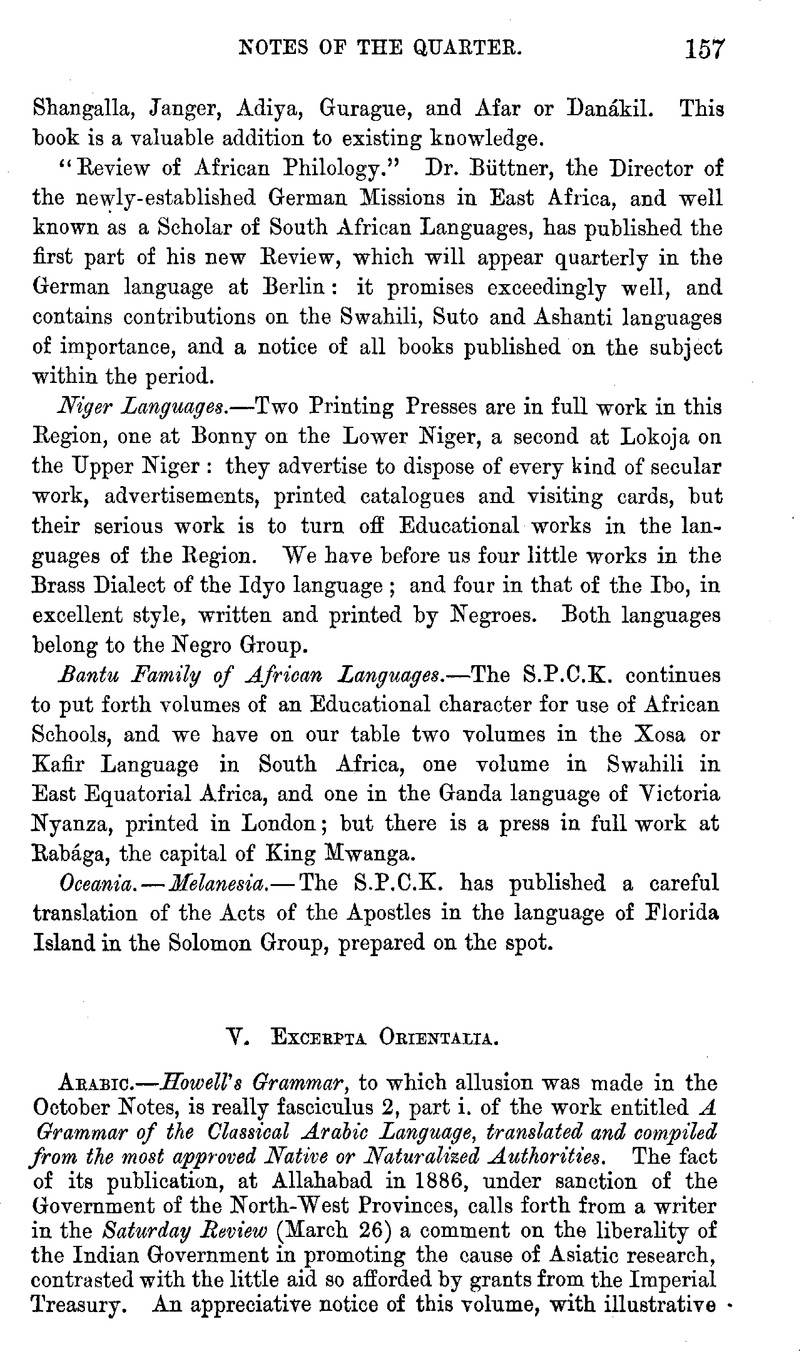No CrossRef data available.
Article contents
V. Excerpta Orientalia
Published online by Cambridge University Press: 15 March 2011
Abstract

- Type
- Notes of the Quarter
- Information
- Copyright
- Copyright © The Royal Asiatic Society 1888
References
page 158 note 1 Writings of most if not all of the Orientalists here mentioned by De Sacy are still available for reference. Some, it need scarcely be said, are of European repute. During the first half of the sixteenth century Pedro de Alcala published his Vocabulista Aravigo en letra Castellana in Granada, and Guillaume Postel his Grammatica Arabica in Paris. There are no less than 86 entries under the latter name in the Catalogue of the British Museum. A wild visionary as well as notable scholar, his “tràs merveilleuses victoires des Femmes du Nouveau Monde, et comment elles doivent à tout le monde par raison commander, et mêsme à ceulx, qui hauront la monarchie du monde viel,” published in 1553, was held worthy of reproduction in 1864, when one hundred copies were printed. The learned Maronite, Gabriel Sionita, is known for the assistance rendered to Le Jay in the Polyglott Bible, and his “Geographia Nubiensis.” [See Preface to Biblia Polyglotta of Brianus Waltonus, A.D. 1657.] Martellotto in 1620, Metoscita in 1624, and Guadanogli in 1642, each published, at Rome, “Institutiones Linguæ Arabicæ”; but the last is perhaps better known for his Arabic and Latin Bible, and the “Apologia pro Christiana Religione qua … respondetur ad objectiones Ahmed filii Zin Alabedin, Persæ Asphahensis, contentas in Libro inscripto Politor Speculi”: one edition printed at Rome in 1637 bears the Arabic inscription:
Agapitus, Professor of Arabic in the University of Padua, published in 1687, Flores Grammaticales Arabici idiomatis; and the Grammatiea Arabica (Agrumiya), and Thesaurus Arabicus (Syro-Latinus), are both works of Obicinus.


